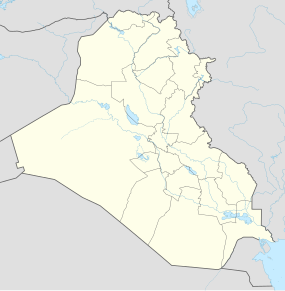Seleucia on the Tigris
| ܣܠܝܩ Σελεύκεια (Ancient Greek) |
|
| Alternate name | Salīq, Seleucia-on-Tigris, Seleucia on the Tigris |
|---|---|
| Location | Babil Governorate, Iraq |
| Region | Mesopotamia |
| Coordinates | 33°5′40″N 44°31′20″E / 33.09444°N 44.52222°ECoordinates: 33°5′40″N 44°31′20″E / 33.09444°N 44.52222°E |
| Type | Settlement |
| Area | 5.5 km2 (2.1 sq mi) |
| History | |
| Builder | Seleucus I Nicator |
| Founded | Approximately 305 BC |
| Abandoned | 165 AD |
| Periods | Hellenistic to Roman Imperial |
| Cultures | Greek, Babylonian, Parthian |
| Site notes | |
| Excavation dates | 1927–1932, 1936–1937, 1964–1968, 1985–1989 |
| Archaeologists | Leroy Waterman, Clark Hopkins, Antonio Invernizzi, Giorgio Gullini |
Seleucia (/sɪˈluːʃə/), also known as Seleucia-on-Tigris or Seleucia on the Tigris, was a major Mesopotamian city of the Seleucid, Parthian, and Sassanid empires. It stood on the west bank of the Tigris River opposite Ctesiphon, within the present-day Babil Governorate in Iraq.
Seleucia (Greek: Σελεύκεια, Seleúkeia) is named for Seleucus I Nicator, who enlarged an earlier settlement and made it the capital of his empire around 305 BC. It was the largest and most important of the but is sometimes distinguished as Seleucia-on-Tigris or Seleucia on the Tigris (Latin: Seleucia ad Tigrim) from the name of its river.
Texts from the Assyrian Church of the East's synods referred to the city as Salīq (Syriac: ܣܠܝܩ) or some times Māḥôzē (Syriac: ܡܚܘܙ̈ܐ) when referring to the metropolis of Seleucia-Ctesiphon.
...
Wikipedia

